David Stairs
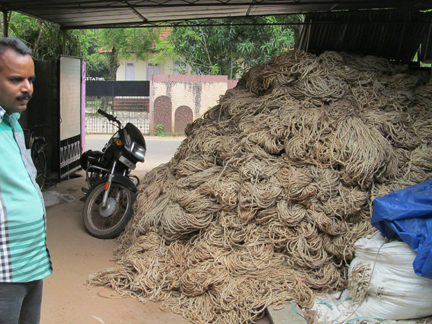
Febin standing by a pile of rope
I just returned from a week in Kerala. On Monday morning April 2nd I was passing through Alleppey when I noticed a coir mill, or rope-making factory. Remembering that this was a rope-making region, I asked our driver Febin if we could stop at a mill. We pulled over at the next one, and took a step out of time. In an open-air steel-roofed structure a dozen people were engaged in the traditional weaving of rope and rope byproducts.
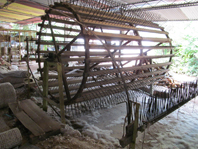
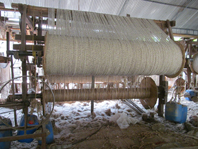
Alleppey, or Allupuzha in revised nomenclature, is a fishing region south of Cochin on the Kerala coast, so there is plenty of need for rope, or coir as it’s known. In an previous post I talked about the tourism industry in Alleppey, notably houseboat tourism, which also depends upon rope and mat making.
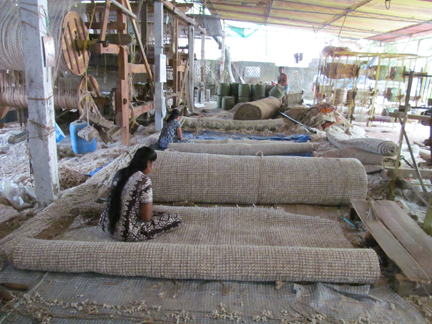
Surface finishing of mats
Rope making actually resembles other forms of fiber manufacture. In this case, sisal, jute, or coir is used instead of wool or cotton. But the fiber needs to be carded, spun, and spooled, then sorted into a variety of sizes before weaving or cording.
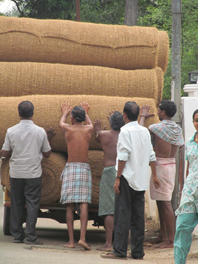
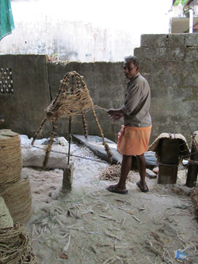
Large size mats, like those pictured being loaded onto the truck, are used in a variety of ways, as is rope of various thicknesses. One interesting aspect of the finishing process is the shaving step, where a worker shaves the completed mat with a sharp knife to give it a smoother surface.
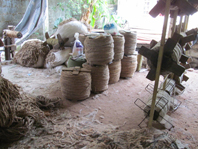
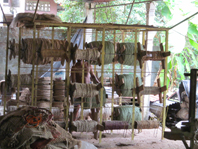
We didn’t stay longer than it took to snap a dozen photos; there was much to see! But coir manufacture is a very prominent industry in the Alleppey/Allapuzha area. A quick Google search yielded over one hundred exporters in Kerala. We left 200 rupees with one of the workers as a sign of our appreciation of their tolerance of our intrusion. This “tea money” would provide a welcome break for all the workers present.
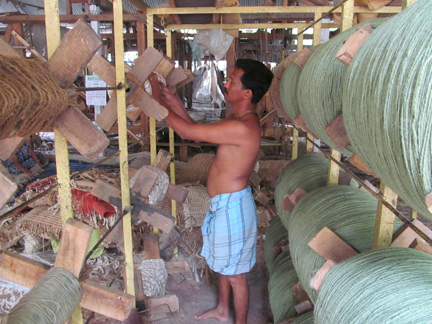
David Stairs is the founding editor of Design-Altruism-Project











Leave a Reply
You must be logged in to post a comment.